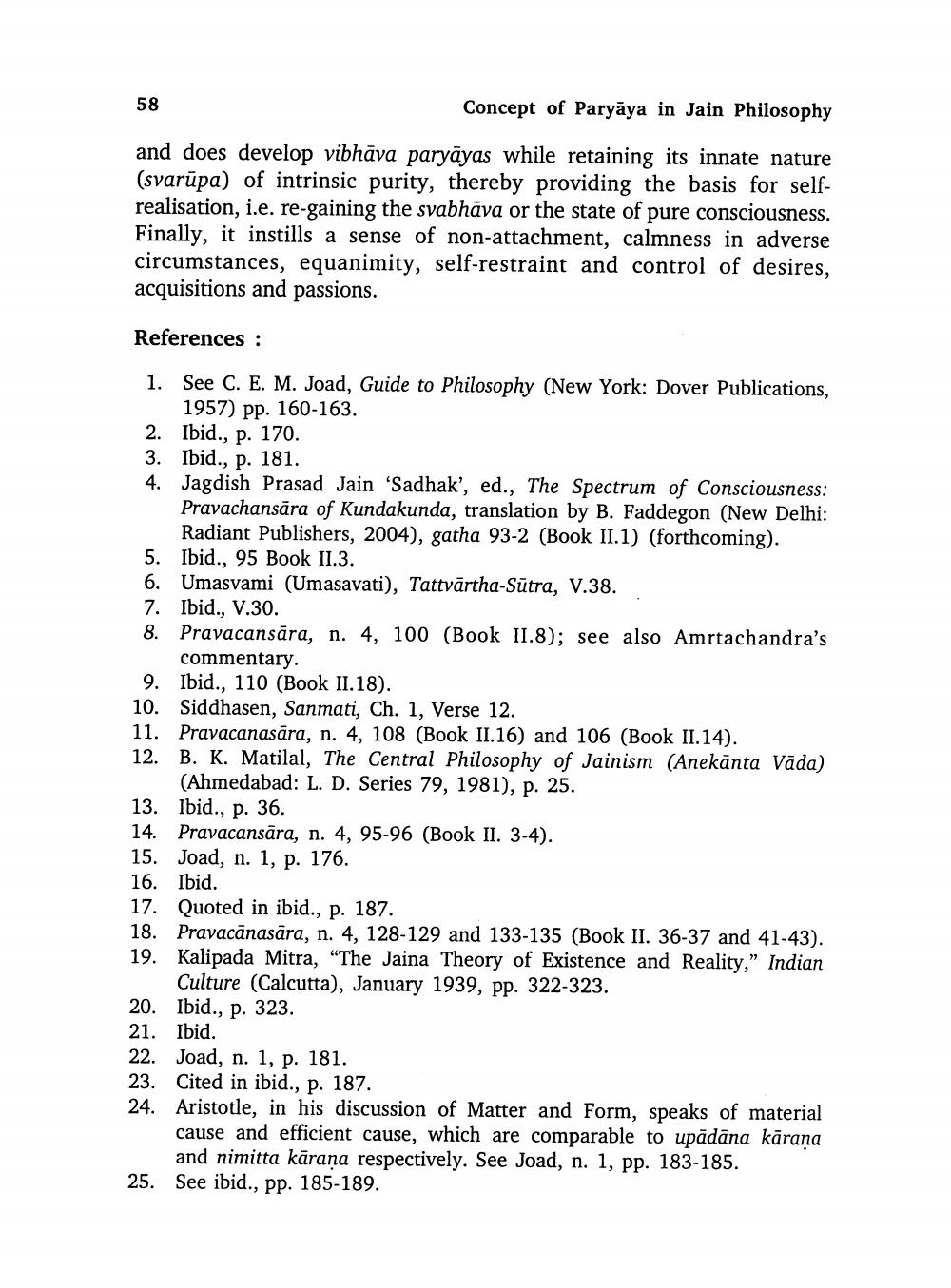________________ 58 Concept of Paryaya in Jain Philosophy and does develop vibhava paryayas while retaining its innate nature (svarupa) of intrinsic purity, thereby providing the basis for selfrealisation, i.e. re-gaining the svabhava or the state of pure consciousness. Finally, it instills a sense of non-attachment, calmness in adverse circumstances, equanimity, self-restraint and control of desires, acquisitions and passions. References : 1. See C. E. M. Joad, Guide to Philosophy (New York: Dover Publications, 1957) pp. 160-163. 2. Ibid., p. 170. 3. Ibid., p. 181. 4. Jagdish Prasad Jain 'Sadhak', ed., The Spectrum of Consciousness: Pravachansara of Kundakunda, translation by B. Faddegon (New Delhi: Radiant Publishers, 2004), gatha 93-2 (Book II.1) (forthcoming). 5. Ibid., 95 Book II.3. 6. Umasvami (Umasavati), Tattvartha-Sutra, V.38. 7. Ibid., V.30. 8. Pravacansara, n. 4, 100 (Book II.8); see also Amrtachandra's commentary. 9. Ibid., 110 (Book II.18). 10. Siddhasen, Sanmati, Ch. 1, Verse 12. 11. Pravacanasara, n. 4, 108 (Book II.16) and 106 (Book II.14). 12. B. K. Matilal, The Central Philosophy of Jainism (Anekanta Vada) (Ahmedabad: L. D. Series 79, 1981), p. 25. 13. Ibid., p. 36. 14. Pravacansara, n. 4, 95-96 (Book II. 3-4). 15. Joad, n. 1, p. 176. 16. Ibid. 17. Quoted in ibid., p. 187. 18. Pravacanasara, n. 4, 128-129 and 133-135 (Book II. 36-37 and 41-43). 19. Kalipada Mitra, "The Jaina Theory of Existence and Reality," Indian Culture (Calcutta), January 1939, pp. 322-323. 20. Ibid., p. 323. 21. Ibid. 22. Joad, n. 1, p. 181. Cited in ibid., p. 187. 24. Aristotle, in his discussion of Matter and Form, speaks of material cause and efficient cause, which are comparable to upadana karana and nimitta karana respectively. See Joad, n. 1, pp. 183-185. 25. See ibid., pp. 185-189.




